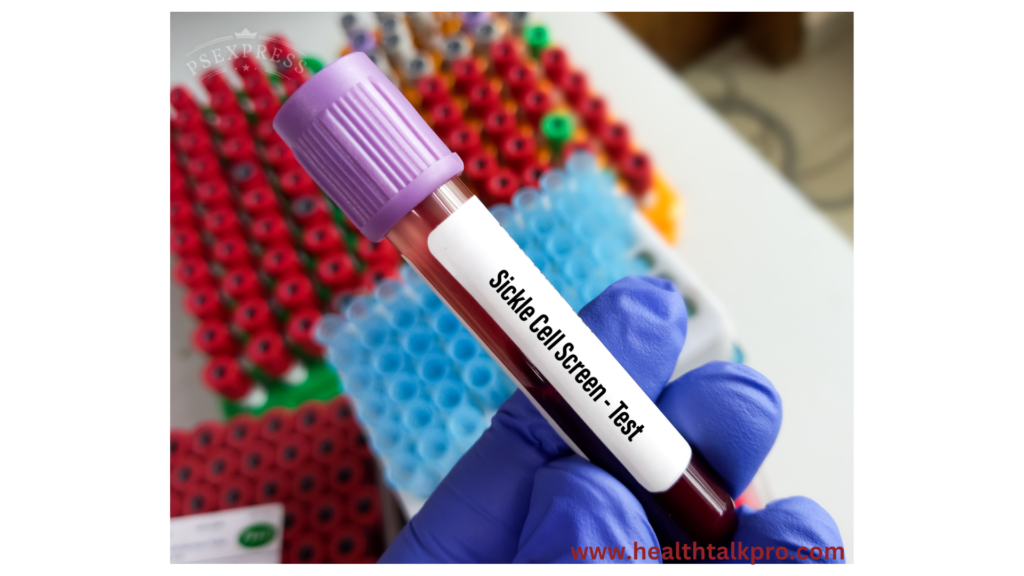Solubility Test for Sickle Cell Anemia – Procedure, Importance, and Results
Sickle cell anemia is a hereditary blood disorder caused by mutations in the hemoglobin gene, leading to abnormal hemoglobin known as Hemoglobin S (HbS). One of the key diagnostic tools for this condition is the solubility test, a straightforward and cost-effective method to detect the presence of sickle hemoglobin in the blood.
This blog will walk you through the solubility test’s procedure, significance, and limitations. By understanding this diagnostic tool, you’ll be better equipped to appreciate its role in healthcare.
What is the Solubility Test for Sickle Cell Anemia?
The solubility test is a simple screening procedure used to identify the presence of hemoglobin S in a patient’s blood. This test works on the principle that hemoglobin S becomes insoluble when mixed with specific reagents, forming a cloudy solution.
The test is primarily used for:
- Screening purposes: To detect sickle hemoglobin in high-risk populations.
- Confirmatory testing: To assist in the diagnosis of sickle cell anemia or sickle cell trait.
While the test is efficient, it is not definitive for distinguishing between sickle cell disease and sickle cell trait. Additional tests, such as hemoglobin electrophoresis or high-performance liquid chromatography (HPLC), are needed for a comprehensive diagnosis.
The Procedure: Step-by-Step
The solubility test is quick and typically performed in a laboratory. Here’s how it works:
- Sample Collection: A small blood sample is taken from the patient.
- Mixing with Reagents: The blood is mixed with a buffered solution containing reducing agents like sodium dithionite. These agents reduce hemoglobin to its deoxygenated form.
- Observation: The mixture is observed against a light source. If hemoglobin S is present, it precipitates and makes the solution cloudy. If the solution remains clear, it indicates the absence of sickle hemoglobin.
Advantages of the Solubility Test
- Speed: Results are available within minutes, making it a useful tool for rapid screening.
- Cost-effectiveness: The test is inexpensive compared to more advanced diagnostic methods.
- Ease of Use: It requires minimal equipment and expertise, making it accessible in low-resource settings.
Limitations of the Solubility Test
Despite its benefits, the solubility test has some drawbacks:
- Inability to Differentiate: It cannot distinguish between sickle cell trait and sickle cell anemia.
- False Negatives: This test may not detect hemoglobin S if the patient’s hemoglobin level is very low (e.g., in severe anemia).
- Age and Condition Dependence: Newborns with sickle cell anemia may not test positive due to the predominance of fetal hemoglobin (HbF), which masks HbS.
For these reasons, follow-up diagnostic methods are essential to confirm the results of the solubility test.
Clinical Importance of the Solubility Test
- Early Diagnosis: Early identification of sickle cell trait or disease enables prompt management and intervention.
- Population Screening: Widely used in endemic regions to screen large populations for carriers of the sickle cell gene.
- Healthcare Planning: Helps in genetic counseling and preparing families for potential health challenges.
Who Should Get Tested?
The solubility test is recommended for:
- Individuals with a family history of sickle cell disease.
- People from high-risk ethnic groups, including African, Mediterranean, Middle Eastern, and Indian populations.
- Patients presenting symptoms like frequent pain crises, fatigue, or signs of anemia.
Final Thoughts
The solubility test is a valuable tool for the initial screening of sickle cell anemia. Its simplicity and affordability make it an indispensable part of healthcare in resource-limited settings. However, it is crucial to remember that this test is only the first step in the diagnostic process. A positive result should always be followed by confirmatory tests to provide accurate and comprehensive diagnoses.
If you or a loved one falls into a high-risk group, consider discussing screening options with a healthcare professional. Early detection of sickle cell anemia can significantly improve quality of life and guide proactive management strategies.
